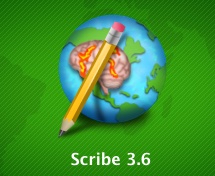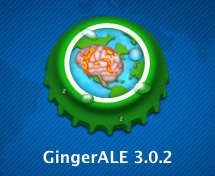Taxonomy Overview
BrainMap uses a structured standardized coding scheme which describes published human neuroimaging experimental results. Originally conceived in 1988, it has evolved with changes in the field during over 25 years of development. This taxonomy has been used to describe thousands of publications and tens of thousands of experiments, drawing upon hundreds of thousands of subjects and reporting hundreds of thousands of coordinates as results.
While other neuroimaging coordinate-data archives exist, only BrainMap combines this volume of data with extensive meta-data coding and rigorous, ongoing quality control. More than one thousand peer-reviewed publications have cited using BrainMap's data and software.
This site is intended to serve as a reference for those seeking to fully understand the taxonomy. It should be helpful for creating meta-analytic workspaces, searching our databases, correctly coding papers for submission to a database, or performing further analysis such as behavioral profiles.
Experiment-Level
An experiment is defined as the comparison of brain images that creates a statistical parametric image (SPI). This three-dimensional map of statistical data is meant to relate specific brain regions to the experimental design of the publication.
Experiment-level meta-data describes key aspects of the experiment, such as which subjects, sessions or conditions apply, as well as the following:
- Context: the broadest category to which an experiment belongs within the realm of brain imaging
- VBM Analysis: (Structural) voxel-based morphometry methodology
- Contrast: (Task) how the compared conditions are different
- Paradigm Class: (Task) experimental task used
- Behavioral Domain: (Task) categories and subcategories which classify the mental operations likely to be isolated by the contrast
- Locations: results of the SPI comparison in coordinate form - (X,Y,Z)
Paper-Level
The meta-data encoded at the paper-level is broad information that applies across the entire study, or at least across experiments.
- Citation: relevant information about the publication, such as the journal, author names, and the date published
- Submitter: contact information of the person who coded this publication, such as name and email address
- Abstract: (Structural) published summary of the research article, usually found at the beginning of the paper
- Prose Description: (Task) the publication's aims, hypothesis and experimental design
- Sessions: a single session is defined as a period during which a subject arrives, is scanned and recorded, and is released
- Subject Groups: relevant demographics of each subject group, including age, native language, diagnosis and ICD code
- Conditions: (Task) experiences or tasks the subject undergoes, described through stimulus type, response type, and instruction
- Imaging: the process by which raw data are analyzed; can include software, brain template, and transforms used
- Results Synopsis: (Task) results and conclusion section of the published abstract
- Feedback: used to record any questions or comments for the reviewer or to indicate information missing for BrainMap inclusion; can only be viewed internally by the BrainMap team
Types of Papers
Eligibility Criteria
BrainMap accepts published human neuroimaging articles that report whole-brain coordinate-based results in a standard space. Publications containing sections that don't meet these criteria can be included by coding only the experiments and conditions which qualify.
Structural & Task
The main division of the coding scheme is between Structural and Task. The two types are each kept in their own database.
- Structural Papers: use Voxel-Based Morphometry (VBM) analysis to locate and measure neuroanatomical changes or differences
- Task Papers: use functional imaging to measure brain activity during a task to relate cognitive functions to brain areas
Due to the differences between anatomical and functional imaging, not all meta-data fields will apply to both types of papers. When there are meta-data fields that are only used in one or the other, they will be labeled with either (Structural) or (Task).
Sparse versus Full
Within the functional papers, there is a second division - between Sparse and Full coding.
- Sparse Coding: requires less information, reducing the time needed to code and review submissions
- Full Coding: completely uses the taxonomy's comprehensive coding
Sparse coding is a good option for meta-analyses that will not make use of deep meta-data fields. Full coding is recommended for meta-analyses that use fields that are not included in sparse coding, like behavioral domains or parts of conditions.


